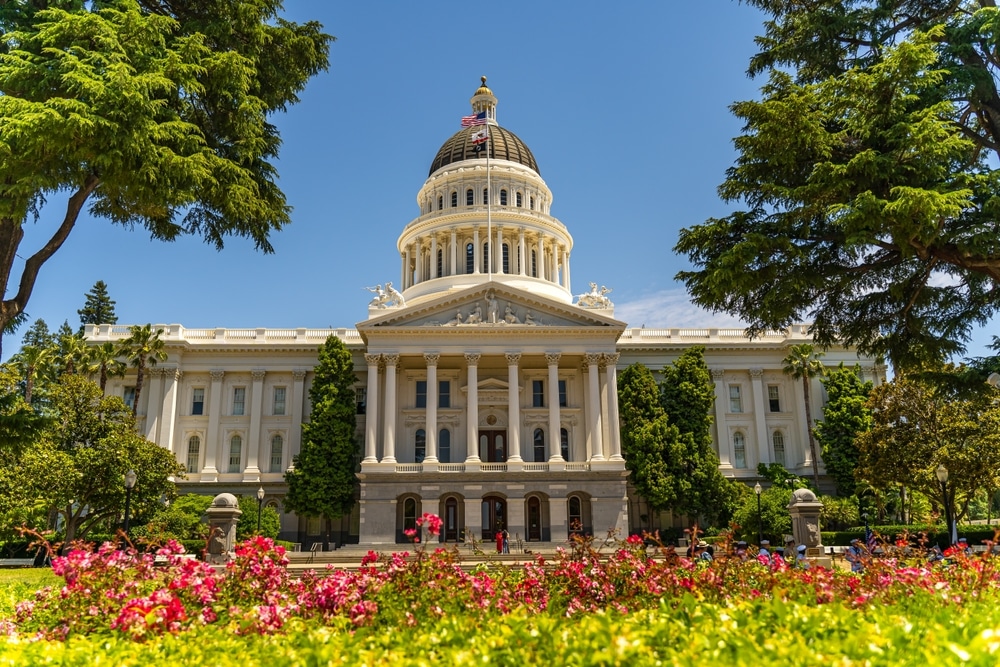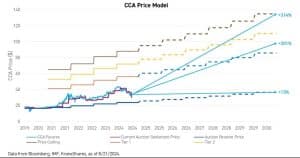The recent carbon credits auction in California raised significant funds for climate action, showing the state’s commitment to reducing greenhouse gas emissions. The auction proceeds will be reinvested into programs aimed at curbing climate change, including initiatives for disadvantaged communities.
California Carbon Credits Are Selling Out, But at What Cost?
The Western Climate Initiative (WCI) has released the results of its latest cap-and-trade auction, highlighting a mix of achievements and emerging concerns. For the 16th consecutive time, the auction sold out, reflecting continued strong demand for allowances.

However, the decline in settlement prices, particularly when compared to previous auctions, has sparked discussions about the future of California’s cap-and-trade program, with potential implications for the broader market.
Auction Details:
- Current Vintage Allowances: The auction sold all 51,179,715 current vintage allowances. However, the settlement price of $30.24 was significantly lower than the $37.02 seen in May. This drop, while the auction still sold out, indicates that market participants might be cautious about future developments.
- Future Vintage Allowances: Similarly, all 7,211,000 future vintage allowances were purchased, settling at $29.75, a decline from $38.35 in May. These allowances, which can be used for compliance starting in 2027, also reflect market uncertainty about the program’s long-term prospects.
Market Jitters Highlight Growing Concerns Over California’s Climate Program
The decline in CCA carbon prices suggests that there is growing uncertainty within the market regarding the design and future of California’s cap-and-trade program. The California Air Resources Board (CARB) is expected to play a crucial role in addressing these concerns through upcoming rulemaking processes.
The market appears to be particularly uncertain about how and when CARB will tighten the program before 2030. Clarity from CARB is urgently needed to ensure that the program continues to function effectively and to provide the necessary confidence to market participants.
Beyond 2030, the uncertainty is even more pronounced. The cap-and-trade program is a key component of California’s strategy to reduce greenhouse gas emissions. Hence, its long-term viability is essential for meeting the state’s ambitious climate goals.
The CCA auction results, though showing a decline in settlement prices, did not come as a major surprise to many compliance firms. These firms have strategically leveraged the lower futures prices to position themselves for their compliance obligations as the new three-year cycle begins. This strategic positioning may reduce the urgency to purchase carbon credits or allowances immediately, contributing to the softer auction results.
The outlook for California Carbon Allowances remains optimistic in the long term, despite the recent softness in auction prices. There is an expectation that the market for CCAs will stabilize over the next six months and potentially trend higher. This anticipated stabilization mirrors the recent performance of the European carbon market, which saw a significant rebound—over 30%—following February’s lows.
Lessons from Across the Pond
The European market recovered as initial fears related to the Ukraine gas supply crisis and policy uncertainty began to ease, allowing the fundamental drivers of the cap-and-trade program to regain influence.
In the EU, Emissions Trading System (ETS) is witnessing a stabilization in European Union Allowance (EUA) prices after a volatile period driven by fluctuations in natural gas prices. Currently, prices are supported at around €72.00, higher than the year-to-date average of €66.59.
Rising gas prices have made coal-fired power generation more competitive, particularly in Germany, leading to increased demand for EUAs from the power sector. As Europe approaches winter, the uncertainty surrounding natural gas supply, especially with the expiration of Ukraine’s gas contract, underscores the need for a steady flow of LNG to meet energy demands.
Meanwhile, industrial demand for carbon remains weak, keeping the focus on the power sector as a key driver for EUA demand.
Funds for the Future: Auction Yields $950M for Climate Projects
Despite the market’s concerns, the CCA auction is expected to generate around $950 million for California’s Greenhouse Gas Reduction Fund (GGRF). This fund is instrumental in supporting projects aimed at reducing greenhouse gas emissions and strengthening climate resilience across the state.
Over the past decade, investments from the GGRF have been credited with cutting emissions by 109.2 million metric tons—the equivalent of removing more than 25 million cars from the road. The fund has supported a wide range of projects, including affordable housing near job centers and zero-emissions transportation options.
The outcome of CCA’s auction underscores the importance of CARB’s upcoming rulemaking. To maximize emission reductions, CARB could consider removing at least 265 million allowances from future auctions, per the Environmental Defense Fund recommendation. Doing so would tighten the supply, increase carbon credit prices, and incentivize covered facilities to invest in emission-reducing technologies.
The auction results also highlight the need for a long-term strategy that ensures the durability of California’s cap-and-trade program, providing the necessary market confidence to drive significant investments in decarbonization.
Ultimately, the success of California’s cap-and-trade program will depend on its ability to reduce greenhouse gas emissions effectively. The recent auction results serve as a reminder of the importance of clear, decisive action from both regulators and legislators to secure the program’s future and to meet the state’s climate goals.




